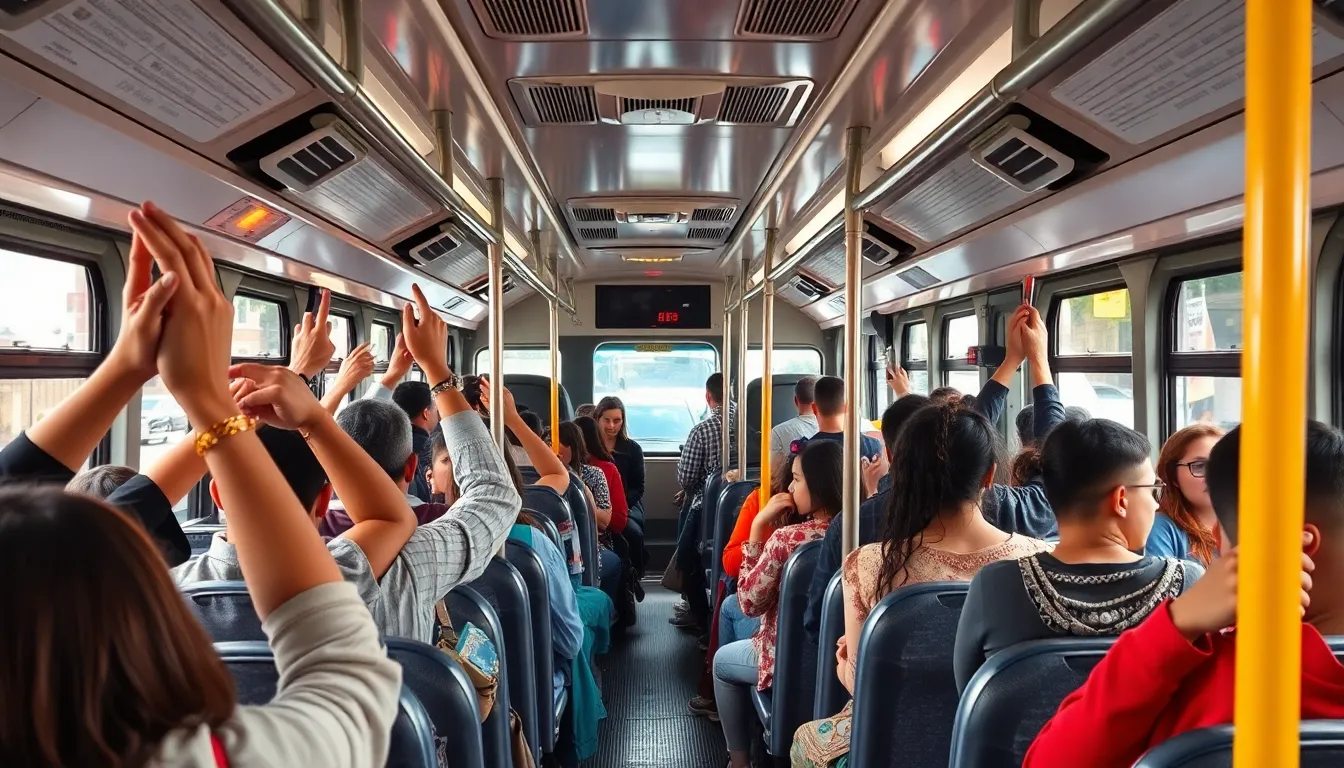Navigating the urban jungle can feel like a high-stakes game of dodgeball, especially when it comes to public transport. With crowded buses and bustling subway stations, safety often takes a backseat to convenience. But fear not! Safe public transport isn’t just a pipe dream; it’s a necessity for everyone who prefers not to play hopscotch with traffic.
Table of Contents
ToggleImportance Of Safe Public Transport
Safe public transport plays a crucial role in urban mobility. It empowers individuals to navigate cities without the constant fear of accidents or crime. Statistics show that public transport reduces traffic congestion. This leads to lower accident rates compared to personal vehicles.
Safety enhances the overall quality of life. When people feel secure while commuting, they’re more likely to utilize public transport. This shift can lead to increased ridership and decreased reliance on cars, which benefits the environment. Safe transport systems also promote social equity, enabling all community members to access jobs, education, and services.
Communities thrive when public transport is both safe and reliable. Investment in safety measures, like surveillance systems and well-trained personnel, fosters a sense of trust among passengers. Regular maintenance on vehicles and infrastructure minimizes the risk of breakdowns and accidents.
Additionally, safe public transport can boost local economies. Increased ridership generates revenue for transit systems, which can be reinvested into services and upgrades. Improved services attract more users, creating a positive feedback loop that enhances service quality.
Ultimately, establishing confidence in public transport safety is essential for urban development. Transportation planners and policymakers prioritize safety to address concerns about crime and accidents. Focusing on safety measures leads to higher satisfaction among users, encouraging more diverse demographics to ride. Safe public transport acts as a cornerstone in building sustainable, accessible cities that cater to everyone.
Common Risks In Public Transport

Public transport carries various risks that passengers should recognize. Minimizing these risks leads to safer commutes and increased trust in public systems.
Health Risks
Health risks commonly associated with public transport include the spread of infectious diseases. Crowded environments facilitate the transmission of airborne illnesses, especially during flu seasons. Touching shared surfaces like handles and seats increases exposure to viruses and bacteria. Passengers frequently report concerns over cleanliness and sanitation, which can deter them from using services. Adopting proper hygiene measures, such as handwashing and using hand sanitizer, reduces these health risks. Airborne transmission studies highlight that maintaining good ventilation in vehicles also plays an essential role in limiting illness spread.
Safety Risks
Safety risks involve both crime and accidents in public transport environments. Theft, harassment, and vandalism occur in crowded spaces, creating anxiety among passengers. Crime statistics underline the need for improved security measures, such as surveillance systems and well-trained personnel, to enhance passenger safety. Accidents related to vehicle collisions or falls due to overcrowding can lead to serious injuries. Regular maintenance of transport vehicles significantly reduces the likelihood of mechanical failures causing accidents. Understanding these safety challenges promotes targeted strategies for creating safer public transport systems.
Strategies For Enhancing Safety
Improving safety in public transport involves implementing various strategies that address specific challenges. These methods enhance passenger confidence and encourage usage, contributing to a safer urban environment.
Policy and Regulation Changes
Implementing stricter regulations can reinforce safety in public transport systems. New policies on vehicle maintenance ensure that all transport options operate safely. Enhanced security measures, such as increased police presence at stations, deter crimes like theft and harassment. Transparency in reporting safety incidents can also help passengers feel more secure. City governments can prioritize funding for safety programs, promoting effective practices across transit agencies. Ensuring passenger input into safety policies fosters trust between the public and authorities.
Technological Innovations
Advancements in technology play a critical role in enhancing safety on public transport. Real-time tracking systems allow passengers to monitor vehicle locations, improving arrival predictions. Mobile applications can alert riders about safety issues, such as route changes or delays. Surveillance technologies, like CCTV cameras, provide additional security by monitoring stations and vehicles. Implementing contactless payment options minimizes the sharing of surfaces, reducing health risks. Enhancing vehicle designs with better safety features can prevent accidents and ensure passenger protection.
Community Involvement In Safety
Community involvement enhances safety in public transport by creating a collaborative environment. Engaging local residents helps establish trust and fosters proactive safety measures.
Feedback Mechanisms
Feedback mechanisms ensure that passenger concerns reach decision-makers effectively. Regular surveys allow riders to voice their experiences and suggestions. Implementing suggestion boxes at stations encourages ongoing communication. Agencies can also use digital platforms to gather and analyze feedback. With transparent responses to concerns, trust between the public and authorities grows, driving improvements in transport safety. Timely adjustments based on passenger input can boost overall satisfaction and encourage more people to utilize public transport.
Safety Awareness Campaigns
Safety awareness campaigns educate the public about safe behavior while using transport systems. These campaigns often target common risks, including theft and overcrowding issues. Local agencies can disseminate information through social media, posters, and community events. Collaborating with schools and neighborhood organizations further spreads awareness. Incentives for safe riding behaviors can motivate passengers to prioritize safety. With increased awareness, communities can actively contribute to a safer public transport environment, encouraging higher ridership and community cohesion.
Conclusion
Safe public transport is vital for fostering urban mobility and enhancing community well-being. When individuals feel secure while commuting, they’re more inclined to utilize these services, which reduces traffic congestion and environmental impact. Implementing effective safety measures and engaging the community can significantly improve the overall experience for passengers.
By prioritizing safety through regulations, technology, and public involvement, cities can create a transport system that not only meets the needs of its residents but also promotes social equity and accessibility. A commitment to safety ultimately leads to thriving urban environments where everyone can navigate freely and confidently.



